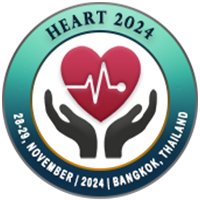
Ali Abbas Hashim Almusawi
Hammurabi College of Medicine University, IraqTitle: Intracranial hemorrhages in pediatric age group in Babylon province
Abstract
Introduction: Intracranial bleeding is abnormal accumulation of blood inside the vault of cranium it may occur
inside the brain parenchyma as intracerebral bleeding or
covering the meningeal space. The aim of study to shed
a light on the most common cause of mortality among
pediatric patients with intracranial hemorrhage.
Method: A cross-sectional study on 45 patients with intracranial hemorrhages age (1day - 1years) admitted to
Pediatric Intensive Care Unit at Babylon maternity and pediatric teaching hospital in a Babylon province during the
period between (1st May 2018 - 1st May 2019), consisting of (29 male) and (16 female).
Results: Regarding the types of intracranial hemorrhages
and their percentages we found only one patient with EDH
(2.22%) from the total number of patients (45), SDH only
(14) patients about (31.11%), SAH (4) patients (8.88%),
ICH intracerebral hemorrhage (3) patients (6.66), IVH (4)
patients (8.88), we have also three patients with mixed
SDH and SAH representing (6.66%), SAH with IVH only
in two patients (4.44%), SDH with IVH in three patients
(6.66%), SDH with ICH in four patients (8.88%), ICH with
SAH in only two patients (4.44%), and lastly ICH with IVH
in five patients (11.11%). so from previous descriptions of
the types of ICH percentages we found that SDH a count
for about (31.11%) of the hemorrhages. Regarding the
total serum bilirubin TSB found that it increased more
than 15 mg/dL in 50% of dead patients and prolong PTT,
PT compromise (72.22%) of mortality.
Conclusion: The prolongation in bleeding profile PT, PTT,
birth trauma, and elevated TSB and associated congenital
anomalies like CHD, Ddown syndrome are associated with
increased risk of mortality in pediatric patients with intracranial hemorrhage.
Biography
TBA Updated soon...

